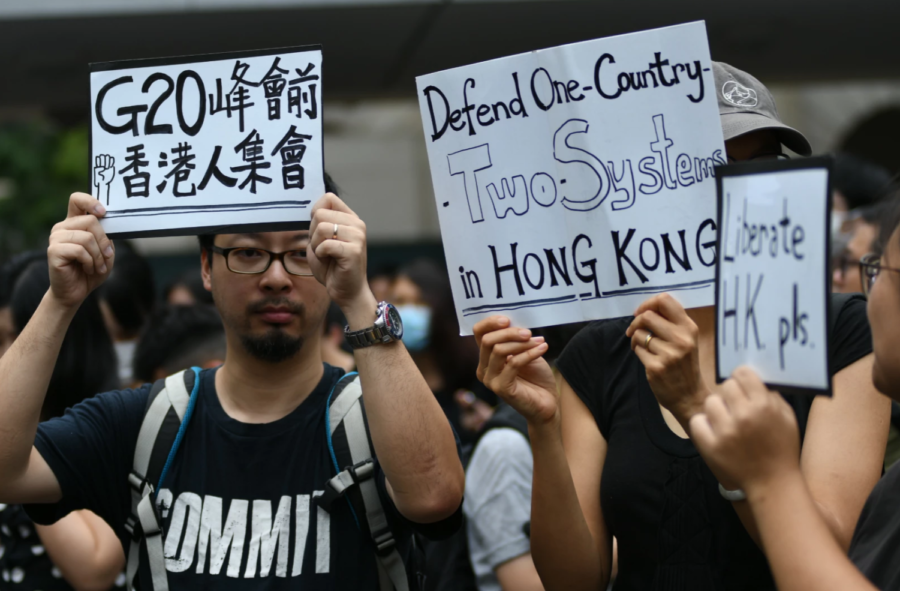Hong Kong’s Summer Of Unrest
Hong Kong has been rattled by protests due to the controversial Extradition Bill.
Going on more than 12 weeks now, the people of Hong Kong have taken to the streets demonstrating against the Fugitive Offenders and Mutual Legal Assistance in Criminal Matters Legislation Bill also more commonly called the Extradition Bill. The bill was published in late March of 2019.
The Extradition Bill was created after the murder of Poon Hiu-wing by her boyfriend while vacationing in Taiwan. However, Taiwan and Hong Kong do not have an extradition agreement. The Extradition Bill was introduced to the Legislative Council (LegCo) in order to set up an extradition agreement between both Taiwan and mainland China.
However, Hong Kong has a unique status compared to the rest of China. Hong Kong, which is a Special Administrative Region of China (HKSAR), has a completely separate legal system than China. Hong Kong practices english common law while China has a socialist legal system. The bill would allow people such as political demonstrators to potentially face trial in China.
Hong Kong was a British colony from 1841 to June 30, 1997. Since the Handover to China, Hong Kong follows two critical documents, The Sino-British Joint Declaration of 1984, and the Basic Law, are critical documents, agreed to by both the United Kingdom and the People’s Republic of China prior to taking effect on July 1, 1997.
The Sino-British Joint Declaration of 1984, said that Hong Kong would enjoy a “high degree of autonomy,” for 50 years after the Handover which runs out on Jun 30, 2047. The declaration also implemented the model of “one country, two systems,” where the People’s Republic of China is the “one country,” and the Chinese and Hong Kong SAR governments/legal systems are the “two systems.”
After Hong Kong’s return to China, there have been many concerns that Hong Kong’s freedoms are at risk of erosion to China’s increasingly powerful influence. Many believe that the Extradition Bill is a continuation of this trend.
Almost immediately after the publication of the Extradition Bill, there was widespread opposition to the proposed bill. The people of Hong Kong took to the streets. One of the first major mass protests occurred on June ninth, when one million Hong Kongers protested in the streets on Hong Kong Island. On June 12, protesters again took to the streets to protest the scheduled reading of the Extradition Bill in the LegCo.
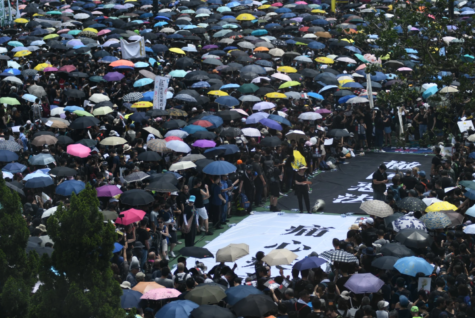
However, this time, the protesters were met with more forceful actions from the Hong Kong Police Force (HKPF) which deployed riot police. The riot police fired tear gas, pepper spray, and rubber bullets on the protesters. This action caused a major escalation in the tensions of the police and protesters. The protests since then have become a weekly occurrence which happens on weekends in Hong Kong.
In an attempt to stop the protests, Chief Executive Carrie Lam declared that the Extradition Bill was “dead” on June 15. However, this did little to nothing to curb the tensions in the territory. Like her predecessors Tung Chee Hwa, Donald Tsang, Leung Cheung Ying, Lam is facing pressure from both the mainland Chinese authorities and the Hong Kong people to deliver on two completely different things.
On June 16, the Hong Kong people again took to the streets to call for the complete withdrawal of the Extradition Bill. Organizers say that around two million people took to the streets. This protest was mainly peaceful and was reminiscent of the Umbrella Movement demonstrations in 2014.
On July 1, or HKSAR establishment Day, the Hong Kong people marked the 22-anniversary of the Handover in many different ways. Hong Kong government officials, dignitaries, and former Chief Executives celebrated the anniversary inside the Hong Kong Convention Center, where the ceremony occurred in 1997. The ceremony consisted of a flag raising ceremony inside due to the security concerns and a helicopter flyover from the Government Flying Service (GFS).
Outside, there was the annual July 1 march where, according to the South China Morning Post consisted of around 550,000 protesters. They marched against both the Extradition Bill and the erosion of freedoms since the Handover.
After the planned march, many people remained in the area around both the convention center and the Tamar Government Complex. In the evening, a mass of protesters surrounded the entrances to the LegCo at the Government Complex. Using a makeshift battering ram, the protesters shattered the glass entrance and stormed the LegCo complex.
Protesters vandalized portraits of pro-Beijing lawmakers and spray painted slogans on the walls such as “Hong Kong is not China.” They also took drinks from the staff cafeteria and left money for the drinks. Although, they did not damage the antiques or the library. For a period, the protesters occupied the LegCo chamber itself.
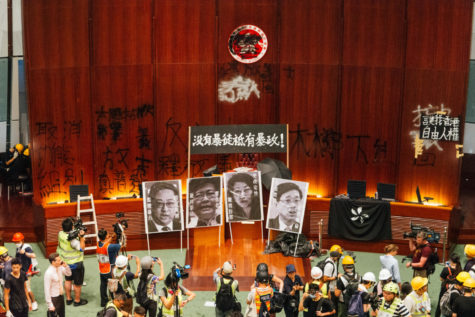
There, they spray painted the HKSAR emblem black and for a brief period put the colonial Hong Kong flag on the podium. During the occupation of LegCo the government issued a statement saying: “these protesters seriously jeopardize the safety of police officers and members of the public. Such violent acts are unacceptable to society. The HKSAR Government strongly condemns such acts, and protesters should stop violent acts immediately.” Not long after, the protesters left the chamber and the complex prior to the arrival of the police.
“I didn’t think things would get this bad. But, there is obviously a very strong case for the government, recognizing the strength of sensible opinion in favor of a proper commission of inquiry, said the 28th and last colonial Governor of Hong Kong (1992-1997), Lord Patten in an interview to RTHK.
July 27 marked a turning point in the protest movement. Protesters arriving home from their demonstrations at the Hong Kong Liaison Office (Beijing’s de facto embassy) in Sai Wan, were met with pro-Beijing Triads dressed in white shirts at the Yuen Long MTR train station. The triad members injured at least 45 individuals consisting of protesters, journalists, and pro-democracy LegCo lawmaker, Lam Cheuk-ting.
The police were absent until after the attack was over, causing rumors of collusion between both the triads and the police. After the event, a triad member was seen shaking hands with pro-Beijing LegCo lawmaker, Junius Ho.
The month of August saw an escalation in the movement. On Aug 3, pro-democracy protesters took their Bruce Lee inspired, “be water” strategy to heart by rapidly blocking the tolls and therefore access to the Cross Harbour Tunnel in Hung Hom. The tunnel, which connects Kowloon and Hong Kong Island is a major thoroughfare and was blocked for a brief period.
“Hong Kong people are not asking for the moon, we are simply asking for something that was promised in the Basic Law,” said LegCo member Alvin Yeung (Civic Party).
The protesters are marching for their five demands. These demands include the complete withdrawal of the extradition bill, the resignation of Carrie Lam from her post, an independent commission into the police brutality, for the police to stop calling the protesters “rioters,” and the release of jailed demonstrators.
“As for stepping down, I am afraid it is not her [Carrie Lam’s] decision, it is not for her to decide…only the Central Government can appoint or dismiss the Chief Executive,” said former LegCo President, Jasper Tsang in an interview to Bloomberg.
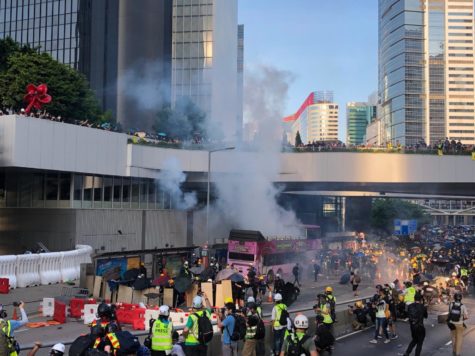
One of Hong Kong’s largest strikes ever occurred on Aug 5, when at least 230,000 protesters blocked traffic, train stations, and other modes of transport. From August 12-14, protesters staged a sit-in in the arrival hall at the Hong Kong International Airport. At the end of the sit in, police clashed with protesters, causing widespread international media coverage and the cancellation of all flights out of Hong Kong.
Drawing inspiration from the “Baltic Way” 30 years prior in 1989, an estimated 210,000 Hong Kongers participated in the “Hong Kong Way” on Aug 23. The demonstration consisted of peaceful human chains in downtown Hong Kong and on Lion Rock, one of the mountainous peaks in the New Territories. On Aug 25, police officers pointed their weapons at protesters and one fired a shot into the air.
For the 22nd time since the Handover to China in 1997, The People’s Liberation Army conducted its annual troop rotation for the local Hong Kong Garrison. The rotation consisted of chinese armed military carriers crossing the border into Hong Kong. The troops however, are only allowed to stay on the Garrison’s base in Hong Kong.
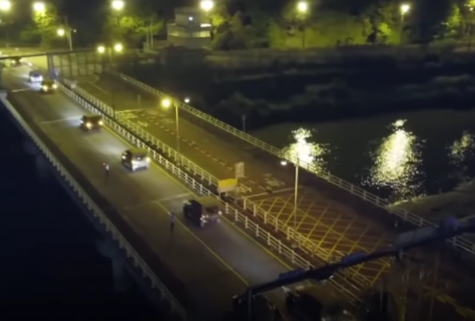
Tensions heightened dramatically on Aug 31. Protesters defied the police by marching on the fifth anniversary of the decision which caused the Umbrella Movement in 2014. That evening, an elite tactical unit of the police stormed the Prince Edward MTR station, arresting protesters. Videos posted showed police brutally beating protesters. Some people called this a “terrorist attack,” by the police. During the period, paramedics were not allowed inside.
The next day, protesters marched to Hong Kong International Airport to cause issues with the public transport system. With riot police approaching, the demonstrators walked to Tung Chung MTR station on Lantau Island. Some protesters turned on fire hoses and broke into the station control room in order to protest the MTR corperation’s compliance with Beijing.
The MTR corporation shut down all rail links to Hong Kong Airport, and Lantau Island. In order to get back home protesters walked for hours to get back to the rest of the city via the Tsing Ma suspension bridge, and the ferries.
On Sept 2, an audio was leaked from a talk between Chief Executive Carrie Lam and a few select individuals at Government House. “But for a Chief Executive to have caused this huge havoc to Hong Kong is unforgivable. It’s just unforgivable. If I had the choice, the first thing is to quit, having made a deep apology is to step down. Beijing does not have a deadline…they and ourselves have no expectation that we could clear this thing [the protests] out by the first of October. CPG [Central People’s Government] has absolutely no plan to send in the PLA [People’s Liberation Army],” said Chief Executive Carrie Lam.
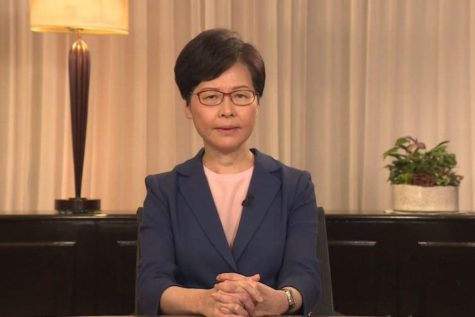
The Hong Kong and the Central People’s Government in Beijing are trying to let the tensions lessen by Oct 1. This is due to the 70th anniversary of the founding of the People’s Republic of China. However, that lessening of tensions is doubtful based on what Carrie Lam said.
“The political room for the Chief Executive who, unfortunately, has to serve two masters by constitution, that is the Central People’s Government and the people of Hong Kong, that political room for maneuvering is very, very limited,” said Lam. Lam later said in a press conference that she had no plans to resign but did not challenge the authenticity of the leaked audio.
On Sept 2, Hong Kong student at both local schools and universities began to boycott classes. Their demands are the same as the overall movement has been so far.
“I admire Hong Kong’s youth for having the courage of their convictions and fighting for their future,” said former Hong Kong Chief Secretary (1993-1997, 1997-2001), Anson Chan according to Bloomberg.
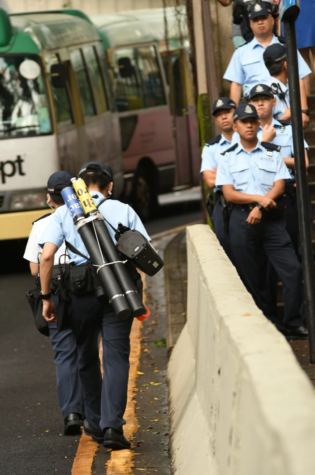
On Sept 4, Carrie Lam said in a pre-recorded television address that she has withdrawn the Extradition Bill. Lam also said that she would appoint two additional members to the Independent Police Complaints Council. Joshua Wong, Secretary General of Demosisto (a youth activist group) tweeted that the Chief Executive’s announcement was “too little and too late.” Wong also said that Lam’s “repeated failure in understanding the situation has made this announcement completely out of touch.”
Lam also refused to set up an independent inquiry to look at the police force’s actions. “The intensified police brutality in the previous weeks have left an irreversible scar to the entire HK society,” said Wong.
On Sept 5, protesters demonstrated in front of the Hang Hau MTR train station. According to the South China Morning Post, the protesters chanted “five demands, not one less.”
They were protesting the recent decision by the MTR Corporation to shut down the Tseung Kwan O line the previous weekend. This also comes after the MTR worker unions wished for more police to protect workers. At the Mong Kok police station, protesters surrounded the station for the seventh day in a row.
In recent days, supporters of the movement have voiced their support of others, the movement, and their displeasure of the government by screaming out of their high-rise apartments at exactly 10pm every night. This has been called the “million scream” by many people. This practice started around Aug 19 and has spread across Hong Kong.
Similar activities have occurred this week when students from two different secondary schools across the street shouted slogans from the balconies in unison. According to the Hong Kong Free Press, the students shouted: “liberate Hong Kong, the revolution of our times.”
On Sept 7, the protester’s grievances with the MTR Corporation reached a new high. In the evening, demonstrators vandalized numerous MTR stations including Mong Kok, Prince Edward, and Yau Mei Tai in Kowloon. There were clashes with police where demonstrators set fire to random road blocks at intersections.
As of now, the Hong Kong protests will continue for the foreseeable future unless one of the sides gives to the other side’s demands. However, which side that will be is still unknown.


